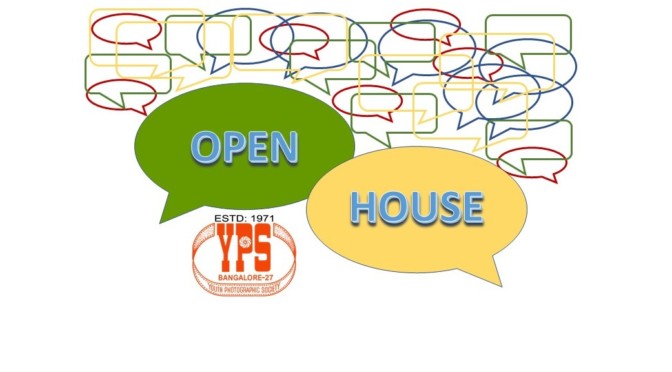YPS Open House | Feb 10 | State Youth Centre
The YPS Open House on February 10th, the first for 2018 was another great session of learning through discussion and sharing. Around 20 people participated with the objective of reviewing winning images from the YPS 35th All India Salon. Varied topics came up for discussion in the process including:
- Noise Reduction
- Composition
- Balancing subjects
- Night Photography
2.5 hours went by without anyone noticing it and the session ended at 9:00 PM. We thank all the participants and their views.
Noise Reduction
At the start of the session before starting discussion on pictures, members wanted a discussion on Noise Reduction. Here are the points that were discussed:
- Avoid introduction of noise where possible by judicious use of camera settings.
- Why so much of noise about noise – Noise is integral to the art of picture making and many times do not even show up in prints unless the picture is over-processed. Generally the back-lit displays looked at from close angle throws up more noise than what one can see in the print.
- Noise is introduced by two specific actions while shooting (a) Long Exposure Noise and (b) High ISO Noise.
- Long Exposure Noise is non-random and repeatable – Most cameras have Long Exposure Noise Reduction feature that can be turned on. When Long Exposure Noise Reduction is turned on, the camera, after taking the picture, generates a dark exposure (shutter closed) for the same duration and settings and subtracts the resultant picture from the original image captured to remove noise. Some cameras also allow such noise profiles to be generated and saved in external files and can be used during post-processing to reduce noise.
- High ISO Noise tends to produce “Random Noise”, that is each picture taken one after another has noise in different places. This type of random noise can be averaged out by taking multiple exposures and then combining them together to produce average pixel values.
- Noise is magnified by many post-processing actions like, Exposure Increase, Contrast Increase, Extract Detail, Claritiy, Sharpening etc.
- There are many noise reduction software available including built-in features in Lightroom and Adobe. Most noise reduction techniques tend to soften the image. Few noise reduction software like Topaz Denoise let you handle “Luminosity Noise” and “Color Noise” through separate actions.

